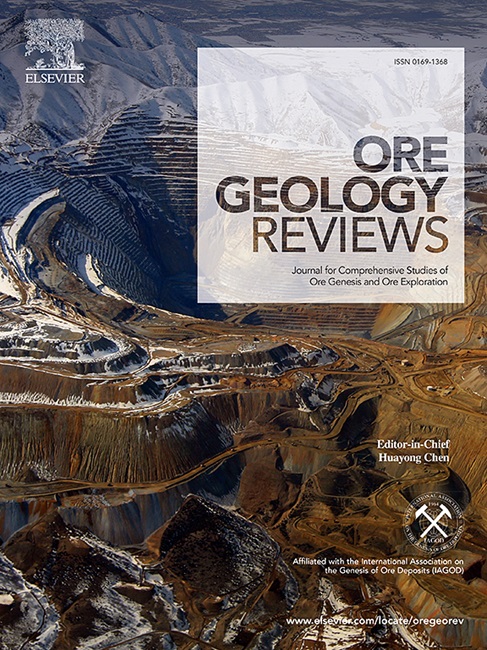Petrology, mineralogy, and geochemistry of major podiform chromite deposits in China: Implications for their genesis
IF 3.2
2区 地球科学
Q1 GEOLOGY
引用次数: 0
Abstract
In China, podiform chromite deposits are the primary source of domestic chromite supply. The main chromite deposits are distributed within the Jurassic-early Cretaceous ophiolites of the Yarlung-Zangbo Suture Zone (YZSZ) in Tibet, as well as the Paleozoic ophiolites in Inner Mongolia and Xinjiang. To clarify the metallogenic processes and the associated tectonic settings during the formation of chromite ores in China, this study delves into the petrological, mineralogical, and geochemical characteristics of representative chromitite samples collected from ophiolites in Tibet (Luobusa, Purang, Dongbo, Baer, Cuobuzha, and Dajiweng), Xinjiang (Sartohay), and Inner Mongolia (Hegenshan). Based on the compositions of chromite, these chromitites can be categorized into high-Cr and high-Al types. The mineral inclusions in chromites are mainly composed of silicates, base metal sulfides, and diverse platinum-group minerals (PGMs). PGM inclusions are more frequently detected in high-Cr chromitites compared to high-Al types. Chromitites from the YZSZ ophiolites are predominantly high-Cr types (Cr# 66–82), suggesting their origin from a boninitic melt in a suprasubduction zone (SSZ) environment. The Hegenshan and Sartohay chromitites are typically high-Al types (Cr# 50.5–52.8) and were formed from mid-ocean ridge basalt (MORB)-like magma. By integrating the information of country rocks, we conclude that the major chromite deposits in China are closely associated with distinct magmatism stages in a supra-subduction zone (SSZ) environment, especially during subduction initiation stages. For future chromitite prospecting, we propose that the ophiolitic massifs along the Yarlung-Zangbo suture zone in southern Tibet hold great potential.

求助全文
约1分钟内获得全文
求助全文
来源期刊

Ore Geology Reviews
地学-地质学
CiteScore
6.50
自引率
27.30%
发文量
546
审稿时长
22.9 weeks
期刊介绍:
Ore Geology Reviews aims to familiarize all earth scientists with recent advances in a number of interconnected disciplines related to the study of, and search for, ore deposits. The reviews range from brief to longer contributions, but the journal preferentially publishes manuscripts that fill the niche between the commonly shorter journal articles and the comprehensive book coverages, and thus has a special appeal to many authors and readers.
 求助内容:
求助内容: 应助结果提醒方式:
应助结果提醒方式:


